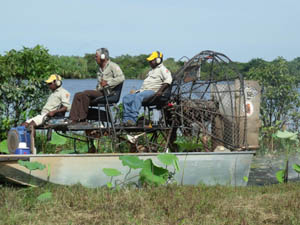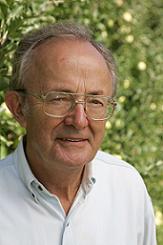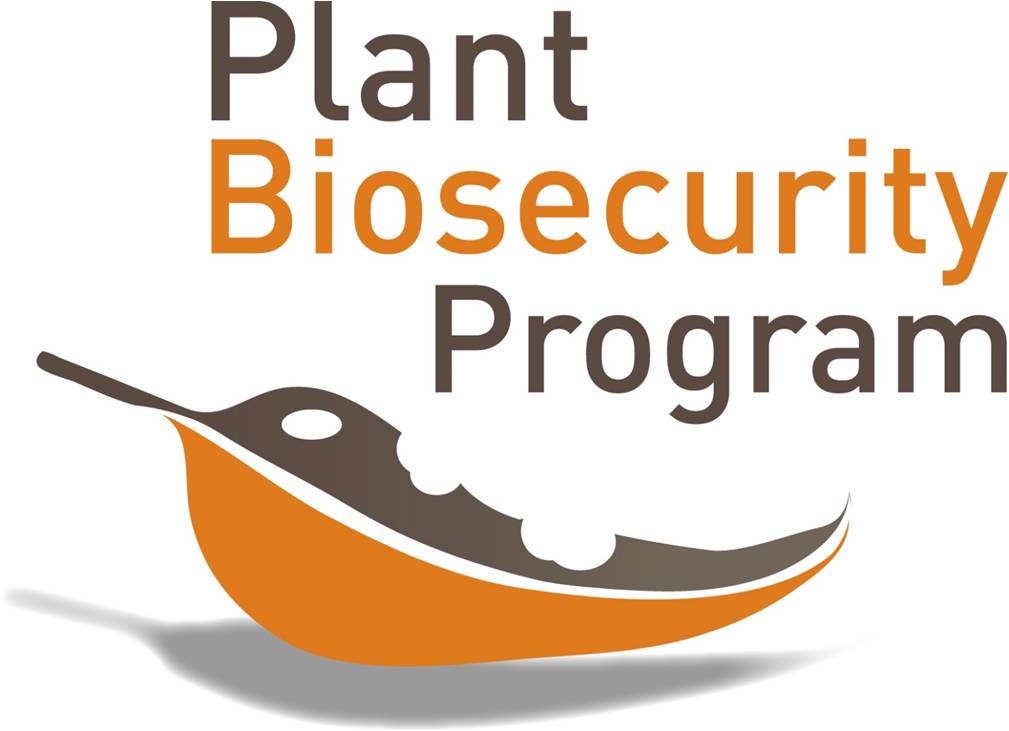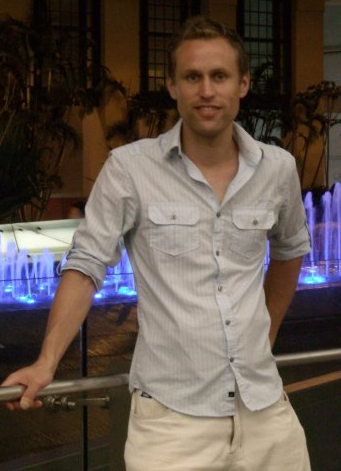Simon says...
.jpg) It only seems like a few weeks ago since my previous Leaflet column where I mentioned how frantic things were in the Canberra office as we made the final preparations for our bid submission. We were extremely pleased to get it submitted before the deadline and even more delighted when we were notified that our bid was successful in progressing to stage two – the interview. It only seems like a few weeks ago since my previous Leaflet column where I mentioned how frantic things were in the Canberra office as we made the final preparations for our bid submission. We were extremely pleased to get it submitted before the deadline and even more delighted when we were notified that our bid was successful in progressing to stage two – the interview.
This is fantastic news, and a result of a copious amount of hard work by many people. The past two months have seen a number of people across the CRC preparing an ‘Exemplar project’ for each of the four programs. We submitted these projects to the CRC Program last Thursday and they will be independently peer reviewed. The next job on the bid to-do list is to start preparing for our interview which will be held in Canberra on 10 November.
While the thought of moving in to a second phase CRC is quite exciting, I am also cognisant of the fact that we have a very successful foundation to build from. A recent independent review of our CRC found ‘The CRC is the only organisation providing a coherent, comprehensive national approach to plant biosecurity research in Australia’. In essence, the CRC Program was established to bring together organisations that have parallel goals and a requirement for research and development in a key area. With a national issue such as plant biosecurity, we have been very successful in integrating scientific solutions across agencies and jurisdictions.
As we reach our sixth year of operations, I think everyone involved in our CRC can feel proud of what we have achieved. Our success is not just limited to scientific outputs but also the broader outcomes such as building networks of researchers nationally and establishing Australia as a key player in the international plant biosecurity community.
Speaking of international collaborators, our thoughts go out to our colleagues in Christchurch, New Zealand after the terrible earthquake which hit two weeks ago. I have been in contact with a number of people who are all cleaning up debris and broken glass from around their homes. Christchurch is a beautiful city and it is such as shame to see it so devastated. Although it will take some time to rebuild homes, livelihoods and the city, we are sending positive thoughts to our colleagues and their families during this extraordinary time.
Today is also a significant milestone for the CRC with Mark Stanaway presenting his final PhD seminar at Queensland University of Technology. Mark started his PhD with the CRC in 2006 and has been researching the use of hierarchical Bayesian models for estimating the extent of plant pest invasions. Mark has statistically examined large historical datasets for spiralling whitefly and red banded mango caterpillar and has developed tools that will provide a foundation for biosecurity regulators to understand uncertainty about pest extent, for more focused risk-based surveillance. Mark’s thesis is expected to be sent to the examiners next week and we congratulate Mark on this achievement.
As part of an inaugural Farming Ahead Conference being held next week in Sydney, farmers can be nominated for a number of awards. The CRC has entered a submission nominating Lachlan Dobson for the Biosecurity Farmer of the Year Award (sponsored by Plant Health Australia). Lachlan manages the quality assurance and farming processes from produce grown from 120,000 mango trees and 80,000 red flesh grapefruit trees in the Kimberley’s Ord River Irrigation Area. He is a true ambassador for sound plant biosecurity practices and recognises how critical they are to maintain market access. When Lachlan is not implementing biosecurity practices, teaching them, communicating or writing about biosecurity, or even mentoring to share his experiences (he provides industry supervision for two of our PhD students) you can guarantee he is thinking about it. On behalf of everyone from the CRC, I wish Lachlan the best of luck on Tuesday 21 September and hope his commitment to biosecurity is recognised by the panel.
I am very pleased to introduce a new regular feature in this edition of The Leaflet. After some discussion about using the word ‘flat’ in the context of ‘not being enthusiastic’ we have found we have an artist in the office. My Executive Assistant, Angela applied this in a biosecurity perspective and created this wonderful cartoon. Anyone who is doing work on the Flat grain beetle will enjoy this, and I am sure you will look forward to seeing what she is inspired to draw for the next edition.
Until next time…

Dr Simon McKirdy
Chief Executive Officer |
in this issue...

from the arm of the chair
Professor Lovett acknowledges the importance of conserving biodiversity to provide genetic resources to meet biosecurity and other needs. READ MORE
biosecurity in cartoon by Ang
Who says biosecurity can’t be funny and light-hearted! Welcome to our inaugural cartoon column by Simon’s Executive Assistant, Angela Hagedorn. READ AND SEE MORE!
improving grain sampling
The Stored Grains Sampling Strategies project team have attended a number of international conferences to present their research. READ MORE
Myrtle rust incursion
CRC researchers aided surveillance in the early stages of the NSW Myrtle rust incursion. READ MORE
recruiting future scientists
Our school education strategy encompasses activities for primary school children right through to high school. READ MORE
worming around Japan
PhD candidate Matthew Tan recently visited Japan to collect potential samples of the pine wood nematode. READ MORE
other news...
Board Director, Ms Christine Campbell has over 30 years’ valuable experience to contribute to the CRC Board, but what does she like to do in her spare time? READ MORE
'Pest risk in a changing world' was the theme for this year’s IVth International Pest Risk Modelling Workshop. READ MORE
East Indonesia holds an inaugural biosecurity forum. READ MORE
CRC modelling project teams get together in WA to discuss their research. READ MORE
Enrol for the new grain storage and biosecurity course. READ MORE
Thank you to all those who contributed to this month's edition of The Leaflet.
If you would you like to contribute to The Leaflet, or provide suggestions for content?
Email us with your ideas.
|
.jpg) Scientists from across the globe convened last week
Scientists from across the globe convened last week  Indigenous communities of Northern Australia have a long-standing connection
Indigenous communities of Northern Australia have a long-standing connection

.jpg) Like all years, October is a very busy month for us with the deadline to submit our Annual Report. This has now been completed and submitted to the Department of Innovation, Industry, Science and Research as well as the Australian Securities and Investments Commission. The Annual Report can be viewed by clicking
Like all years, October is a very busy month for us with the deadline to submit our Annual Report. This has now been completed and submitted to the Department of Innovation, Industry, Science and Research as well as the Australian Securities and Investments Commission. The Annual Report can be viewed by clicking 


.jpg) It only seems like a few weeks ago since my previous Leaflet column where I mentioned how frantic things were in the Canberra office as we made the final preparations for our bid submission. We were extremely pleased to get it submitted before the deadline and even more delighted when we were notified that our bid was successful in progressing to stage two – the interview.
It only seems like a few weeks ago since my previous Leaflet column where I mentioned how frantic things were in the Canberra office as we made the final preparations for our bid submission. We were extremely pleased to get it submitted before the deadline and even more delighted when we were notified that our bid was successful in progressing to stage two – the interview.
 My name is John Austen and my
My name is John Austen and my.jpg) In Jul
In Jul